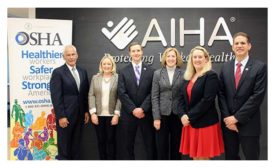Columns
Don’t gamble with reproductive health
Outdated thinking: Naive women will remain silent
December 3, 2018
When your safety process goes stale
Assess program momentum, relevance & branding
November 29, 2018
Editor’s Letter
Who “actively cares” for Congolese miners?
Empathy only goes so far
November 21, 2018
Part 2 of 2
Process safety management - the business case
Evaluate three critical aspects of your operation
November 4, 2018
Never miss the latest news and trends driving the safety industry
eNewsletter | Website | eMagazine
JOIN TODAYCopyright ©2024. All Rights Reserved BNP Media.
Design, CMS, Hosting & Web Development :: ePublishing












